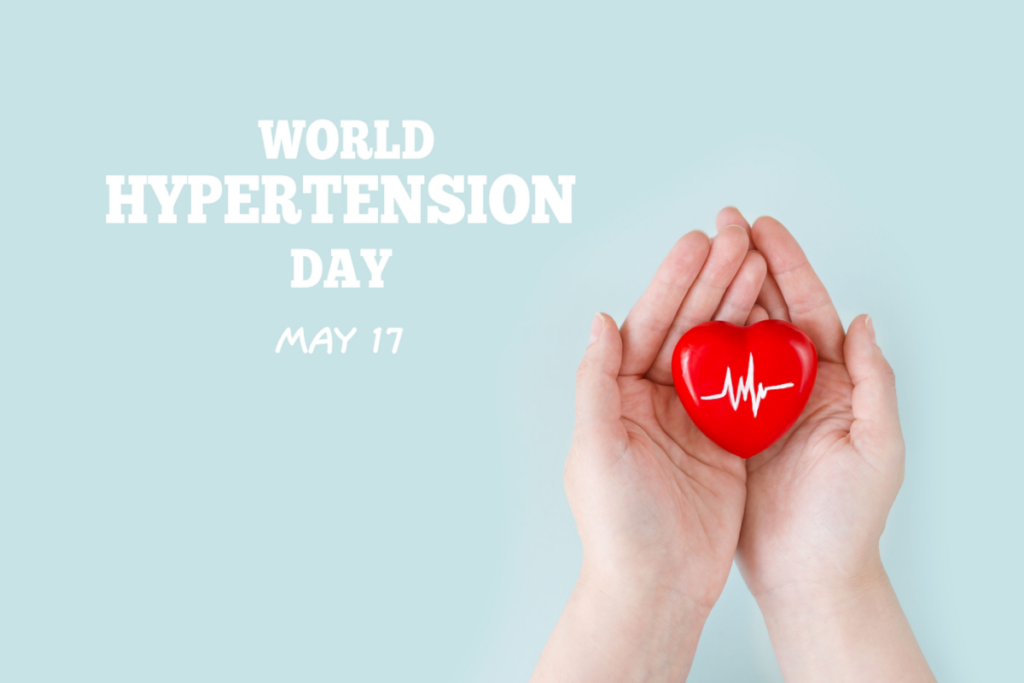Observed each year on May 17, World Hypertension Day 2025 marks its 20th anniversary with the theme: “Measure Your Blood Pressure Accurately, Control It, Live Longer!” Organized by the World Hypertension League, the campaign focuses on improving awareness, diagnosis and access to care — particularly in regions with limited resources.
Globally, hypertension affects one in three adults. From 1990 to 2019, the number of people living with hypertension doubled to 1.3 billion. In the US, CDC data show 47.7% of adults are hypertensive, yet only 20.7% have their blood pressure under control.
Despite hypertension being a leading driver of cardiovascular disease in women in the US, a 2025 survey by Wakefield Research, sponsored by Medtronic and endorsed by WomenHeart, revealed a troubling disconnect. While 94% of women make healthcare decisions for others, over 60% struggle to prioritize their own health, and 56% have never discussed heart health within their families.
World Hypertension Day 2025 calls for renewed cognizance and early intervention. Below, we explore the trials, tools, diagnostics and public campaigns advancing hypertension control.
Targeting Treatment-Resistant Hypertension
Corcept Therapeutics is leading efforts to better understand resistant hypertension, enrolling 1,000 US patients in its MOMENTUM trial. The study investigates the role of endogenous hypercortisolism, building on prior research that linked the condition to one in four patients with difficult-to-manage diabetes.
Meanwhile, drug innovation is accelerating. Tryvio (aprocitentan), developed by Idorsia, is the first new oral antihypertensive class approved in nearly 40 years. Marketed as Jeraygo in Europe, it is now available in the US and UK and offers once-daily dosing and favorable interactions for patients unresponsive to conventional therapies.
Other companies advancing late-stage therapies for resistant hypertension include Mineralys Therapeutics with lorundrostat, a Phase II candidate showing a placebo-adjusted 7.9 mmHg reduction in systolic blood pressure, Tenax Therapeutics with TNX-103 and AstraZeneca with baxdrostat — each targeting distinct aldosterone-related mechanisms.
Despite generic saturation, the antihypertensive market is projected to reach nearly $29 billion by 2026, with Asia-Pacific leading the growth. Oral formulations account for more than 75% of use, while calcium channel blockers dominate the market share. ACE inhibitors are growing fastest, driven by expanded cardiovascular applications and cost-effective generics. Hospital pharmacies lead distribution, but digital channels are expanding rapidly.
Novel Approaches to Pulmonary Hypertension Care
Pulmonary hypertension remains underdiagnosed, particularly in patients with heart failure or chronic lung disease.
Synhale Therapeutics has acquired telaglenastat, a glutaminase inhibitor previously studied in oncology, now being repurposed for pulmonary hypertension across multiple WHO-defined categories, including cases linked to heart failure, lung disease and blood clots. Phase II trials are in planning, targeting metabolic pathways linked to disease progression in both rare and common pulmonary hypertension subsets.
For earlier detection, CorVista Health has developed a non-invasive system that analyzes hemodynamic signals to predict elevated pulmonary artery pressure — offering an alternative to right heart catheterization. In the European Respiratory Journal, the system demonstrated 82% sensitivity and 92% specificity, supporting its use as a validated diagnostic tool that may shorten time to diagnosis and reduce procedural risk.
Technology-Powered Monitoring and Preventive Care
New technologies are reshaping when and how blood pressure is measured. In South Korea, Sky Labs’ CART BP pro, a ring-type, cuffless monitor, is under study for detecting nocturnal hypertension and sleep apnea, which are often missed during daytime checks. The device captures blood pressure every five minutes overnight, enabling high-frequency tracking during sleep.
Movano Health is preparing for a pivotal trial as part of its path toward FDA clearance for its wrist-worn cuffless blood pressure monitor, which uses millimeter-wave radio frequency (RF) and a custom system-on-chip (SoC) for continuous, sensor-free measurements. In an 81-participant study, the device achieved a mean absolute difference of 4.9 mmHg — meaning its readings were, on average, within 4.9 mmHg of a standard reference. This surpassed the FDA’s 7 mmHg accuracy threshold for wearable devices.
Teladoc Health has expanded its Cardiometabolic Health program, combining connected blood pressure monitors, continuous glucose monitors, virtual coaching and remote hemoglobin A1C level monitoring and lipid testing. The platform offers real-time feedback and support from licensed dietitians to manage broader metabolic risk.
And OMRON Healthcare, a longtime partner of May Measurement Month, is donating 4,000 blood pressure monitors this year, including AI-enabled models with atrial fibrillation detection and ECG integration for earlier diagnosis. Since 2017, it has donated 30,000+ devices across 100 countries.
If you want your company to be featured on Xtalks.com, please email [email protected].











Join or login to leave a comment
JOIN LOGIN